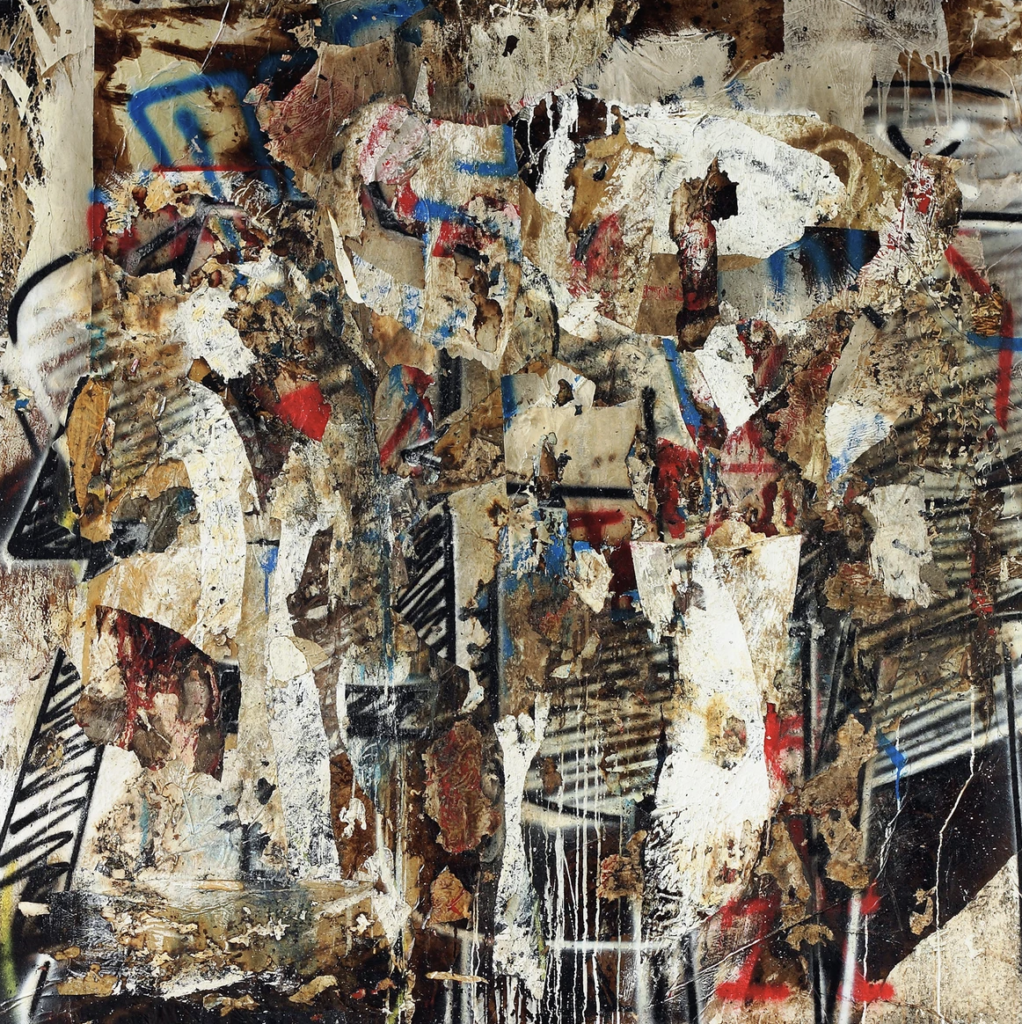Urban Aesthetic Realism in balance between Expressionist Informal Painting and Calligraphic Sign
– Lodovico Minelli Sarteri, 2011
Rae Martini’s “Ghetto landscapes” pictorial series moves towards the search for an aesthetic realism linked to places, lived or passing, scattered in the great contemporary metropolises. Visual microcosms, crammed with stories and suggestions, victims of the inattentive society that gets lost every day in the global frenzy.

Martini’s aesthetic sense is manifested primarily in the exercise of his own visual sensitivity; Rae discovers, on the worn urban surfaces, the intimate turmoil of her own interiority. Photography acts as an instrument of understanding, offering itself as a real emotional matrix and a means to frame one’s inner sensitivity in the organization of a defined space and an instant.
The photographic act is therefore configured as a tool to get to painting. The reality visualized, internalized by the artist, is objectively fixed in a direct and realistic emotional shot.



There remains the alchemical or electronic regeneration of the place, of the surfaces, of the lights, of the colors, of the materials, of the explosive force of the snapshot. For Rae, photography is at the same time an emotional matrix and an aesthetic source: the act of transposing it into painting is the frequency on which the matrix transmits emotions and feelings, the work becomes the recipient and custodian of the impulsive wealth of the author. Painting reinterprets, synthesizes, alters reality through filters of the painter’s poetics and experience. Martini produces living art, capable of representing the customs, the ideas, the appearance of his era, he does it according to his way of seeing, with all due respect to Gustave Courbet, who first publicly declared these intentions on the unfortunate occasion of the Pavillon du Réalisme. Rae Martini raises his confrontation with the public dimension, in a direct, brazen way, giving us precious and secret emotions that have lived in the nocturnal silences disturbed from time to time by some siren. The search for urban aesthetic realism is manifested in Martini through the application of informal expressionist painting.
The expressive power of this style of painting allows the artist to privilege, exasperating it, the emotional data of reality over that which can be objectively perceived in the photographic support. In his all-out material approach, typical of abstract expressionism, Rae wisely unleashes the mental images of her experiences, applying them energetically through delightful rhythms and modules. Martini’s informal material is distinguished by concrete painting, strong gestures and a frank, decisively democratic imprint. The materials used are devoted to the road landscape represented: synthetic paints, enamels, tars, excellently incorporated and transformed by the unmistakable combustion. Martini’s painting vividly relives the passions, traumas and shivers that flowed on the skin of the city on the canvas. As soon as the photograph is taken, it is defined, the painting remains, making the instinct, the rhythm, the aesthetics already contained as seeds in the image flourish and making the journey of the Opera towards the end of time eternal.
Following the vital outburst of emotion, Rae introduces a key passage: the insertion of the sign, the form in the Opera.
The form manifests itself through calligraphic signs belonging to the very personal urban writing code that the artist has studied, practiced and brought to life during his twenty-year experience of street activism. The expressionist emotional impetus is intertwined at this level with signs, shapes, careful colors, vectors of strength, the result of a deliberate and maniacal search for perfection. The power expressed by the traits, both in the styles of the tags, the throw-ups, and the wildstyle, gives the Works a colossal vigor and an overwhelming aesthetic topicality. Despite the formal contrasts put in place by the Artist, life and form blend thanks to elegant correspondences of subversive elements in both fields of application.
Rae Martini’s self-taught methodical approach draws an impressive parallel with the analysis of the philosopher Gilles Deleuze in the essay “The Logic of Sensation”, dedicated to the work of Francis Bacon.
The pictorial-creative procedure that the Deleuzian philosophical criticism outlines reflects the sequence of the four elements of the Kantian analysis developed in the Critique of Judgment: Aesthetic Comprehension, Rhythm, Chaos as an approach to the Sublime, Strength.
Rae Martini consistently with his past exerts his aesthetic and passionate force on the skin of the cities. A skin that is increasingly reinterpreted and filtered by one’s emotions. A subtle dermis of biological architecture on which elements such as wear, dirt, signs of aging, are nothing more than a setting, devoted to the celebration of the values of purity, independence and intellectual elevation in a balanced equilibrium imbued with oriental philosophical nuances.
